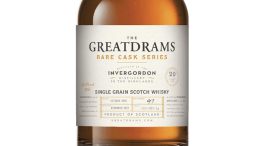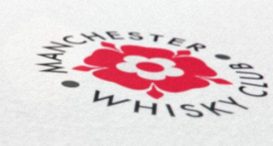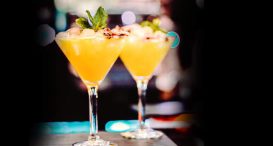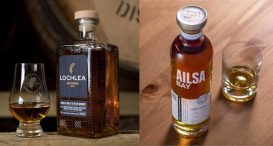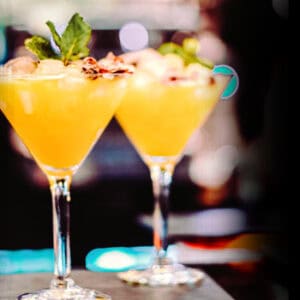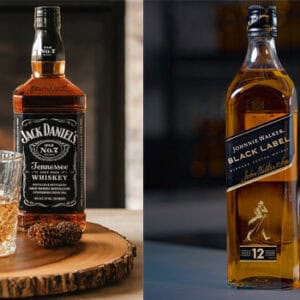Non-whisky spirits from Whisky Regions
let’s begin
"Small batch, handmade Scottish gins have been soaring in popularity in recent years as consumers seek out unique flavour experiences underpinned by a great story”, says Andrew Hannah, Red Door Gin Brand Controller, and he could not be more right.
As consumers seek the new, and the Scottish distilling scene continually not only ups its game, but gains more notoriety in the world spirits market amongst both the on trade, that is to say bartenders, buyers and mixologists, and the off trade, i.e. retailers, commentators and consumers, there appears to be a growing trend for established distilleries to enter the market with clear spirits.
Traditionally, new distilleries such as the Isle of Harris and Eden Mill distilleries, would have produced vodka or gin to finance the time needed whilst they lay down casks to mature for a minimum of three years into whisky; an established business model that has served many new producers very well indeed, in some cases spawning whole new and unexpected long term product lines.
“We were excited about the challenge of creating something entirely new and fortunate that it was not a necessity to generate sales whilst waiting for whisky to be produced and matured”, says Hannah.
The only Scotch whisky brand that has done this previously was Grant’s back in the 1970s / 1980s, with Grant’s Special Dry Gin that was visually styled on the Grant’s Stand Fast bottle design and tasted very nice by all accounts. One must surely ask if this was Hendrick’s 1.0? Since then though, no one has followed the same path, until now.
In the last few months, however, the Benromach and Speyside distilleries have released their own gins into the market to compliment their whisky offering.
Hannah explains that Gordon & Macphail has been “closely monitoring the success of the gin market for several years and felt confident that we can bring something new and exciting to spirits drinkers eager for a brand with a strong heritage. As a company with decades of expertise in handcrafting premium spirits, we wanted to create something different and spent many months working with leading gin industry experts to develop a recipe that we thought would have wide appeal both in the UK and internationally”.
He goes on to say that “others in the whisky category have added a gin to their portfolios but gin drinkers are not always aware that some premium Scottish gins are made by whisky companies as they are not associated in terms of brand or company name. It’s important than consumers understand that the process for making gin is very different from whisky and the two are quite separate. The whisky category continues to grow internationally and for those whisky companies that don’t make a gin, there may be a desire to focus on their core product.”
Glenrinnes Distillery is part of our family estate that holds the same name: the estate has been part of our family since 1994. We had been looking at opportunities to diversify the estate beyond farming for some time, including possibilities afforded by the numerous freshwater springs on the estate. Living and working in the area, it is hard not to take some inspiration from the rich distilling heritage. Once I started working for the estate full time, I could explore our ambition of building a distillery here.
Alex Christou, Founder, Glenrinnes Distillery, the home of Eight Lands Organic Speyside Gin, that launches this spring says that “gin is at the core of our story: we aren’t doing this as part of a master plan to make whisky. We want to be part of the Speyside culture and heritage but are trying to carve this out for ourselves through our focus on quality organic white spirits.
Christou goes on to say that they “worked with local companies to build our distillery and create our stills, as we wanted to ensure we used as much local skill in this area as possible. Our investment of over £4 million in the building of Glenrinnes Distillery and the development of Eight Lands hasn’t been done for the short term. We have big ambitions for the brand and are looking to take Eight Lands to global markets in the future. We aren’t apologetic about our focus on gin and vodka – we are proud for this to be our passion and our priority.”
From a brand perspective, Red Door Gin is handmade at the Benromach Distillery in Forres, Speyside; a distillery owned by the family behind the Independent Bottlers Gordon & Macphail who have a long and proud history of spirits production and has been named after the distillery’s distinctive red doors and is packaged in a distinctive red bottle, showing that location and iconifying where the product is made is important to the brand.
For Speyside Distillery, the story is more about their historical links to poetry and the botanicals they use are sourced from within their own garden. In their press release about their new gin, called Byron’s Gin after “Lord Byron – the most famous and flamboyant poet of the Romantic movement” they explain that “the spirit has been produced in the distillery’s own copper pot stills with an integrated botanicals basket”, and that “Byron’s Gin has been crafted by distillery manager Sandy Jamieson in partnership with Andy Amphlett, the County Recorder for the Botanical Society of Britain and Ireland. Using his deep-seated knowledge of botanicals, Andy hand-selected plants and berries from the distillery gardens and the nearby landscape as the basis for the gin, while Sandy, who has spent his entire working life in distilling, added his technical know-how.”
They are not the only brands to have been happily distilling spirit to mature into whisky before feeling that it was only right that they also release a gin.
Darnley’s Gin, from the same people behind the Kingsbarns Distillery in Fife, has been int he market for several years and has recently been through a packaging overhaul to greater reflect their brand’s story and place in the market.
Caorunn Gin, produced at the Balmenach Distillery in Cairngorms National Park fun the Scottish Highlands blends locally foraged botanicals with other, more global flavours to create a gin quite unique in flavour.
The Botanist is not only multi-award-winning, but is produced on an old Lomond still at the Bruichladdich distillery on Islay and uses local Islay-based botanicals including bog myrtle and gorse flowers in its recipe. Presented in one of the most striking bottles in the gin category, with the latin terms for each of the botanicals embossed in the glass itself, The Botanist is performing really well, not only domestically and in traditional markets, but also in China and Southeast Asia.
The future looks bright for gins from traditional whisky producing distilleries. Hannah says that “as gin is a new category for us with its own specific consumer profiles, motivations, innovations and trends, we will be experimenting more into 2019 with our signature serves, cocktails and matching of spirit to different tonics to build on the consumer experience and to create new innovations”.
“There is so much innovation taking place in spirits right now – it’s an exciting world to be part of and see evolve. The more noise, support and education there is around the gin sector overall can truly benefit both new and established brands. The more people see and taste a variety of gins, especially from areas known for their great spirit heritage such as Speyside, the more explorative and educated they can become as gin consumers,” says Christou.
Over the coming years we must all be wondering whether the bigger distilleries of Speyside, Islay, The Highlands and Islands and Campbeltown will dip their toe in to the gin category looking to forage some extra zeros for their bottom line. Then there’s the rather obvious barrel-aged gin category that is ripe for a big brand to explode onto the scene and to create a wonderfully well-balanced gin that has been rested in oak casks and released at scale. If you already have the oak, the maturation know-how then, well, why not?
Greg
You might be interested in
More from the blog
Follow greatdrams
latest articles
Latest whisky
exclusively from GreatDrams
-
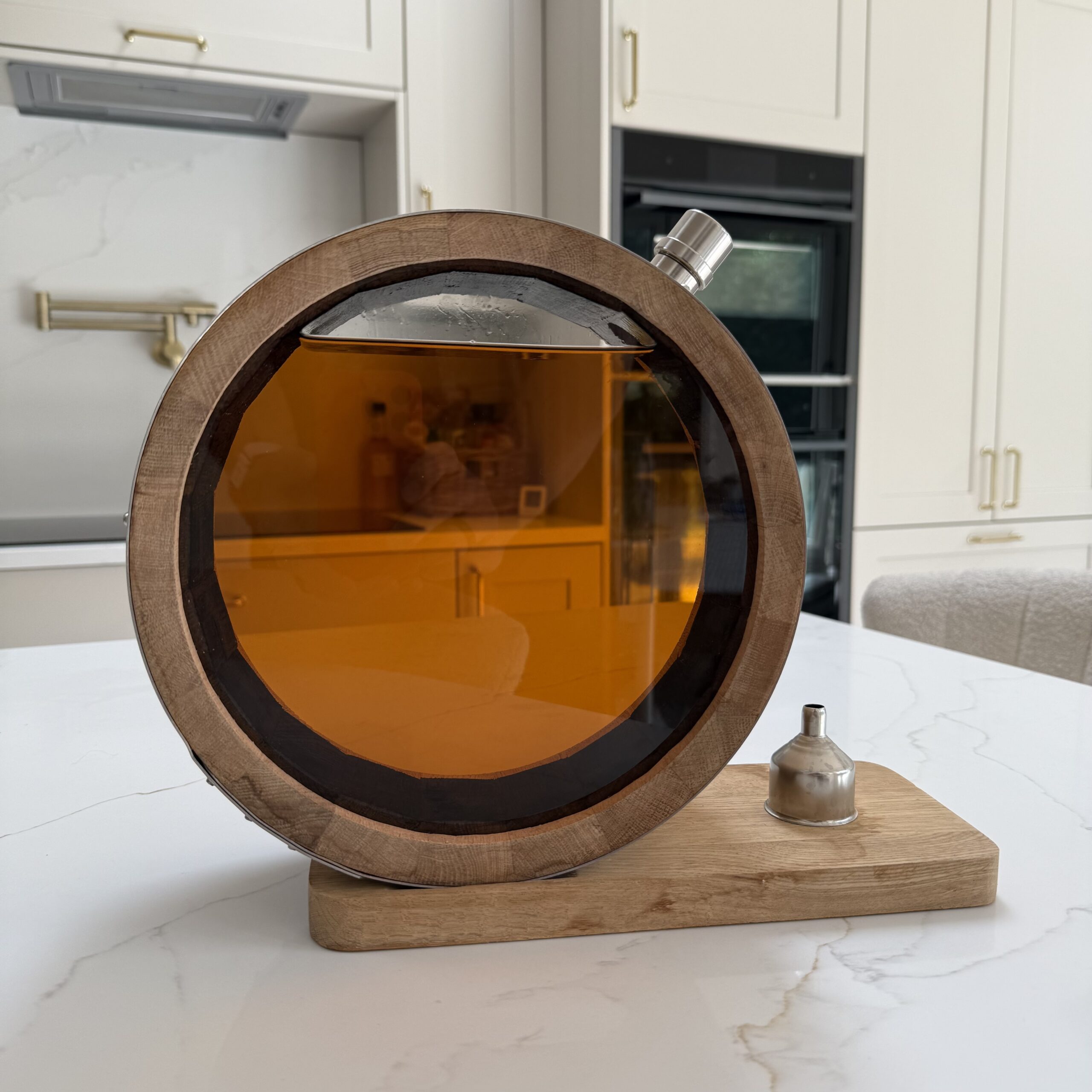
The GreatDrams Signature Barrel Decanter
£200.00 – £370.00




